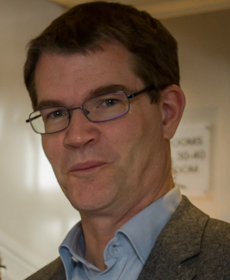A word from the EP Deputy Department Head - September 2024
 Dear colleagues,
Dear colleagues,
As I write in mid-September, the days are getting shorter and colder, and we are in the midst of marking the 70th birthday of CERN, with the community party on 17th September, and the official celebrations on 1st October. It is an opportunity to reflect on the achievements of CERN to date, and the challenges that lie ahead, and both aspects are reflected in this latest issue of the EP newsletter.
I hope you have all had a chance to take some well-earned rest over the summer period. But the CERN accelerators and experiments have certainly not been on vacation, instead enjoying an exceptionally productive period that has seen the LHC Run 3 data sample overtake that acquired in Run 2. You can read about data-taking operations in all four major LHC experiments in this issue, together with a view from the LHC physics programme coordinators. This deluge of data brings its own challenges, and LHCb describes how they are increasingly applying machine learning to the online event selection, data quality assessment and offline analysis, in order to get the most from the ever-expanding dataset. Meanwhile, ATLAS has recently released its 2015-16 dataset to the whole scientific community via the CERN open data portal. Such developments rely increasingly on the efforts of research software engineers and other computing professionals, and you can read about the new ‘EVERSE’ consortium that aims to increase awareness and recognition of such work, both within and beyond high-energy physics.
The non-LHC physics programme using CERN’s unique facilities continues apace, including the AMBER experiment’s measurements of antiproton production, important for understanding recent space-based measurements of cosmic rays. At ISOLDE, the new DeVITO setup opens up new opportunities for the study of beta decays of polarized atomic nuclei. Recent developments in the BASE experiment allow the fast and efficient cooling of single antiprotons produced by the CERN AD/ELENA complex, enabling ever more precise measurements of the antiproton’s properties.
At the Neutrino Platform in the North Area, the NP04 ProtoDUNE detector has just completed its second major run; you can read about the results and how ProtoDUNE contributes to the overall effort towards the LBNF / DUNE facility for neutrino physics being constructed in the US, with CERN a major player. Looking further ahead, novel techniques for producing ‘tagged’ neutrino beams are being explored with ENUBET and NuTAG as part of the Physics Beyond Colliders initiative.
The EP R&D effort continues to develop the particle detection technologies of the future, and articles in this issue showcase the work in EP R&D work package 1.4 on characterizing silicon detectors and understanding the mechanisms of radiation damage, as well as the Europe-wide effort on electronics for particle detectors planned by the DRD7 collaboration.
Away from CERN, two fascinating articles describe recent results from the Dark Energy Spectroscopic Instrument (DESI) sky survey, which has mapped distant galaxies with unprecedented precision, giving insights on cosmological acceleration and the mystery of the neutrino masses.
There is a wealth of information to discover in this issue of the EP newsletter, and I wish you happy and fruitful reading.
